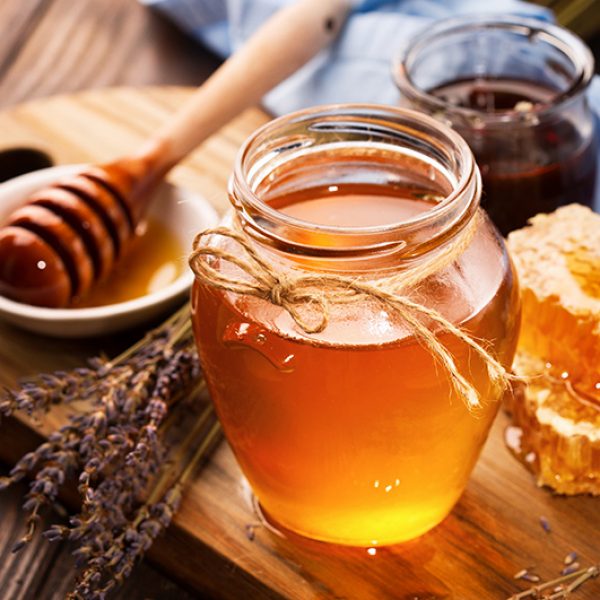

What’s the Buzz about Mānuka Honey?
Mānuka honey has unique properties. It is earthier and richer than other honey, with a deeper flavour profile and a thicker, more viscous consistency. It also has unique chemical compounds.
For centuries, the Māori of New Zealand used the mānuka tree in aboriginal folk medicine. Bark and leaves were boiled, the vapour inhaled for head colds, the liquid rubbed on rheumatic joints and ingested for stomach upsets and dysentery. The bark was also used topically for skin diseases. When the Māori adopted beekeeping, they began producing mānuka honey from the blossoms of these valued trees. Like many plants with magical properties, the mānuka shrubs develop under harsh conditions. True mānuka honey is difficult to harvest, which is why real mānuka honey makes up only 1% of all honey worldwide.
The source of Flora Mānuka Honey is an uninhabited remote region of New Zealand that is famously rugged, with steep hillsides, pristine volcanic soils and extreme weather. Some beekeepers might get no honey some years or may need to employ helicopters to collect it. The mānuka trees flower during a harvest season that lasts only two to six weeks every year. During that time, beekeepers must stand by, observing the flowers, which only open for 12 days, and coordinating the movement of beehives day and night to bring them into contact with the trees at this precise time. The bees travel up to 6 kilometres to collect it. Even working full tilt, neither beekeepers nor bees can keep up with explosive worldwide demand for mānuka honey.
In 1981 Dr. Peter Molan and Kerry Simpson discovered it had antibacterial properties. By the 1990s, there was so much interest in mānuka honey, the Unique Mānuka Factor Honey Association™ was formed to support science, research, and independent testing and protect consumers from counterfeits. In 2006, a German research team determined that mānuka honey had unique antibacterial properties that killed bacteria growing in a laboratory situation. They isolated a compound in mānuka called methylglyoxal (MGO) that was responsible for the honey’s stable anti-bacterial activity. By testing more than 80 varieties of honey from around the world, they verified that New Zealand’s mānuka honey has up to 70 times more antibacterial methylglyoxal than other honey.
Mānuka trees have variable amounts of a compound called DHA which develops into MGO. When researchers found that medical-strength mānuka honey, extremely concentrated in MGO, could treat antibiotic resistant superbugs like MRSA (methicillin-resistant Staphylococcus aureus), effort was made to understand what these circumstances were. It turns out, once collected, the honey must be aged for MGO to develop to its full potential. Once carefully removed from the hives, quality mānuka honey has its DHA levels, pollen and leptosperin checked. Then, to develop more MGO, the honey is stored, monitored and nurtured by experts, like a gourmet cheese or fine wine. It is tested and graded at different stages according to a range of quantitative and qualitative parameters. The finished product is assessed using tests for taste, colour, creaminess and MGO content. It undergoes comprehensive microbial testing and it is confirmed free of contaminants. Unfortunately, it’s estimated that two-thirds of global mānuka products are not the real thing. UMF™-rated New Zealand mānuka honey is the only honey safeguarded by several levels of stringent standards and laboratory testing to ensure the finished product is authentic and not adulterated or counterfeit. When choosing mānuka honey, the label can provide lots of help:
- An MGO grade indicates methylglyoxal concentration in milligrams per kilogram
- A UMF™ certification number verifies the levels of Leptosperin, DHA and MGO
- “Mānuka honey” means one from a single flower type (Monofloral), while a “mānuka honey blend” is multifloral (it may contain honey from other flowers)
- Bottles with traceable tags.
They can be scanned to prove your honey is authentic. Use the NFC reader app, standard on Android phones and free for iPhone. This shows you the origins of your honey, a map of its source, and a certificate of analysis. All Flora Mānuka Honey have NFC tags. There are no counter-indications for mānuka honey. As a caution, though, unpasteurized honey is not recommended to children under 12 months, or for applications of the type where sterile, medical grade honey has been used, such as in clinical studies and in medical applications for ulcers, open wounds and MRSA.
- The nature of the antibacterial activity. Bee World 73 (1) 5-28. ; Molan PC (1992b) The antibacterial activity of honey. 2. Variation in the potency of the antibacterial activity. Bee World 73 (2) 59-76 2 Mavric,E., Wittmann,S., Barth,G., and Henle,T.(2008). Identification and quantification of methylglyoxal as the dominant antibacterial constituent of Manuka (Leptospermumscoparium) honeys from New Zealand. Mol. Nutrit. Food Res. 52, 483–489.doi:10.1002/mnfr.200700282 https://www.ncbi.nlm.nih.gov/pubmed/18210383 under the right conditions. 3 Manuka-type honeys can eradicate biofilms produced by Staphylococcus aureus strains with different biofilmforming abilities, Jing Lu1, Lynne Turnbull1, Catherine M. Burke1, Michael Liu1, Dee A. Carter2, Ralf C. Schlothauer3, Cynthia B.Whitchurch1 and Elizabeth J. Harry1

